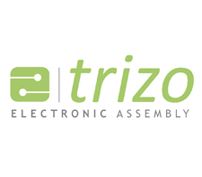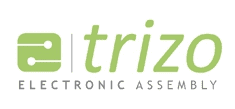- Contact 0870 350 7767
- |
- Advertise
Home > Trizo Limited > Improving Cleaning Methods During Electronic Assembly
Improving Cleaning Methods During Electronic Assembly
 News and PR from Trizo Limited - Published 18 November 2015
Safe solder cleaning during electronic assembly is needed to avoid damage to printed circuit boards.
News and PR from Trizo Limited - Published 18 November 2015
Safe solder cleaning during electronic assembly is needed to avoid damage to printed circuit boards.
Today's electronic assembly methods have to be driven by quality. But as the thousands of printed circuit boards used for a growing market in smartphones and tablets come off the production line, it is almost inevitable that some will be damaged. Considering that these circuit boards can cost almost half of the retail price of the final electronic device, it is important for manufacturers to minimise the losses.
The best way to cut back on such losses in electronic assembly is to reclaim the damaged circuit boards. Up to now, such boards have been manually cleaned before being reworked. However, it is becoming increasingly difficult for manufacturers to continue the manual cleaning process given the consistent customer demand for speed and quality. The solution today is a form of contactless cleaning - once a very specialised process, but one which now is becoming mainstream in the electronic assembly market.
The old method of reworking damaged boards consisted of three steps. First, any inoperative component had to be removed; then the residual solder that held the component in place on the circuit board had to be cleaned away; and finally, the new replacement component had to be installed. Steps one and three of this process have been automated for a long time. The problem has always been the second step - the cleaning process. This has had to be done manually by a very skilled technician using hand tools, wicking braid and a soldering iron with special tips. This process has depended on the skill and experience of the technician, while at the same time the commercial emphasis has been on speed. So more damage has been inevitable historically.
Such additional cleaning methods have become more ineffective given thicker circuit boards, smaller pad and pitch sizes and the incorporation of ceramic ball grids, especially in aerospace electronics, that are very difficult to clean.
The solution is an automated process called contactless cleaning, or scavenging. It removes solder with a precision-controlled tip and a vacuum nozzle for those components that are too small for a human technician to attempt.
This technology is evolving into a standalone machine where the damaged circuit board can be placed for reworking, and the whole process can be run by a single operator.
Please contact us if you have any queries or would like to know more about electronic assembly or design.
The best way to cut back on such losses in electronic assembly is to reclaim the damaged circuit boards. Up to now, such boards have been manually cleaned before being reworked. However, it is becoming increasingly difficult for manufacturers to continue the manual cleaning process given the consistent customer demand for speed and quality. The solution today is a form of contactless cleaning - once a very specialised process, but one which now is becoming mainstream in the electronic assembly market.
The old method of reworking damaged boards consisted of three steps. First, any inoperative component had to be removed; then the residual solder that held the component in place on the circuit board had to be cleaned away; and finally, the new replacement component had to be installed. Steps one and three of this process have been automated for a long time. The problem has always been the second step - the cleaning process. This has had to be done manually by a very skilled technician using hand tools, wicking braid and a soldering iron with special tips. This process has depended on the skill and experience of the technician, while at the same time the commercial emphasis has been on speed. So more damage has been inevitable historically.
Such additional cleaning methods have become more ineffective given thicker circuit boards, smaller pad and pitch sizes and the incorporation of ceramic ball grids, especially in aerospace electronics, that are very difficult to clean.
The solution is an automated process called contactless cleaning, or scavenging. It removes solder with a precision-controlled tip and a vacuum nozzle for those components that are too small for a human technician to attempt.
This technology is evolving into a standalone machine where the damaged circuit board can be placed for reworking, and the whole process can be run by a single operator.
Please contact us if you have any queries or would like to know more about electronic assembly or design.
Other announcements from Trizo Limited
-
High-Temperature Resilient SMT Assembly
The development of interconnect materials to sustain high temperatures in SMT assembly
18 Nov 2015
-
Embedded Passives in PCB Manufacturing
Embedding components during PCB manufacturing reduces device sizes and manufacturing costs.
18 Nov 2015





